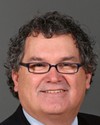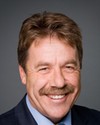There is a number of factors. I believe that a significant component of the reduced harvest of species on the moratorium list pertains to the enhanced program we now have in place. With the use of forensics to monitor locations and where vessels are and seasonality and so on, we have enough experience to know, almost, in a certain location what a vessel is probably catching.
In addition to that, obviously there has been a significant reduction in fishing effort, which would correspond to a reduction in catch by 70% over that timeframe.
There are individual species, yes, for which we obviously see availability. At the same time, we see a directional improvement in terms of the general abundance of a lot of species in the area in recent times.
In addition, I should also note--I'm not sure if I noted it earlier--that fishing gear is another component. For example, last year one of the measures adopted included the elimination of one of the particular chafers that could result in issues with bycatch. There are a number of factors.




